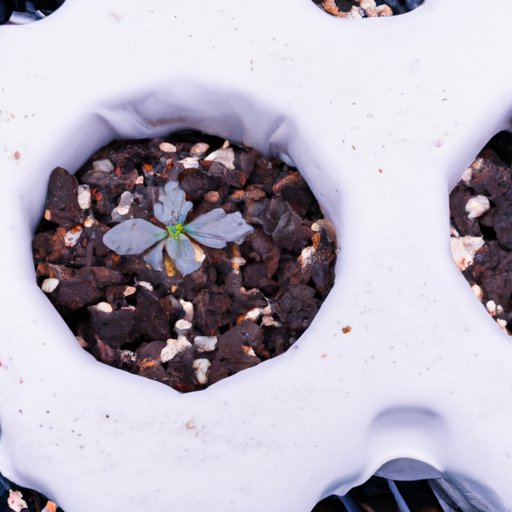
Introduction
Before we dive into the details of growing cannabis, let’s take a moment to understand why it’s become such a popular hobby and industry. Cannabis is known for its variety of medicinal and recreational benefits, making it a valuable commodity in today’s market. Growing cannabis not only allows you to have control over the quality of your product but also saves you money and provides a rewarding experience. This guide is aimed at beginners who are new to the process and are looking for a comprehensive guide to grow their own cannabis plants.
Step-by-Step Guide to Growing Cannabis for Beginners
First and foremost, you need to choose the right location for your cannabis grow. A suitable location should have adequate lighting and ventilation, be secure and private, and away from any unwanted attention. Once you have selected your location, it’s time to gather the right equipment. You will need items like grow tent, grow lights, ventilation systems, and nutrient solutions, among others. After acquiring the equipment, you need to decide which cannabis strain to grow according to your experience level and desired effects.
The next step is germinating cannabis seeds or acquiring clones, after which you can move to the vegetative and flowering stages of growth and provide proper nutrients and water. The vegetative stage involves the proper growth of the plant’s leaves, stems, and roots, while the flowering stage focuses on the development of flowers or buds. Finally, when the plant has matured, it’s time to harvest and cure your cannabis plants, which ensures the optimal potency, flavor, and aroma.
Introducing Hydroponics for Cannabis Cultivation
Hydroponics is a soilless method of growing cannabis that involves growing plants in a nutrient solution. As it eliminates the need for soil, hydroponics can result in faster growth rates and higher yields. When setting up a hydroponic system, you have to choose between different types of systems, including deep water culture, nutrient film technique, and drip systems. Still, the key is to maintain consistent nutrient and pH levels, monitor water temperature, and provide proper lighting and ventilation.
Soil-Based Growing for Cannabis
Soil-based growing methods are more traditional and have been used for centuries. It involves growing cannabis plants in a soil mixture that provides essential nutrients and natural microbes to ensure healthy growth. Soil-based growing is ideal for beginners as it requires less investment compared to hydroponics. However, it takes longer to see results and requires more effort in ensuring the plants’ health by keeping the soil properly aerated and moist, providing suitable fertilizers, and avoiding common mistakes like overwatering or using contaminated soil.
Maximizing Yields with Lighting Technology
The quality and yield of cannabis plants heavily depend on proper lighting conditions. Different lighting technologies like fluorescent, metal halide (MH), and high-pressure sodium (HPS) bulbs offer different spectrums of light that cater to different stages of growth. Newer technologies like light emitting diodes (LEDs) offer higher energy efficiency and lower heat emission. Besides, you can maximize yields by placing the light source at the correct distance, providing proper ventilation and humidity, and avoiding light burn or overexposure.
Pest Management Strategies for Cannabis Crops
Like any other plant, cannabis is susceptible to pest infestations that can severely affect the plants’ health and yields. Common pests like spider mites, whiteflies, and thrips can be managed using biological control methods like beneficial insects and natural predators. Additionally, organic remedies like neem oil or diatomaceous earth can help prevent and manage pest infestations. If the situation becomes severe, growers can use chemical solutions like insecticides and fungicides. Prevention is always better than cure, so maintaining proper hygiene and monitoring the plants’ health regularly can help avoid most pest infestations.
Understanding the Science behind Cannabis Cultivation
The interaction between cultivation practices and the biological processes behind plant growth is a complex matter, and understanding it can help grow healthier and more potent cannabis plants. Learning about the role of the plant’s growth stages, the importance of nutrients like nitrogen, phosphorus, and potassium, and the effects of pH, temperature, and humidity can help suitable cultivation practices. With ongoing research and advancements in cannabis cultivation techniques, understanding the science behind plant growth can help growers stay up to date with the latest technology and methods.
Conclusion
In conclusion, growing cannabis can be a rewarding and satisfying experience for both personal and commercial purposes. This comprehensive guide has provided beginners with essential steps to start their own cannabis grow, including choosing the right location, suitable equipment, and choosing the appropriate strain of cannabis. Additionally, this guide has discussed hydroponic and soil-based growing systems, maximizing yields with lighting technology, managing pest infestations, and understanding the science behind plant growth. It’s essential to check local laws and regulations before embarking on your cannabis cultivation journey.




